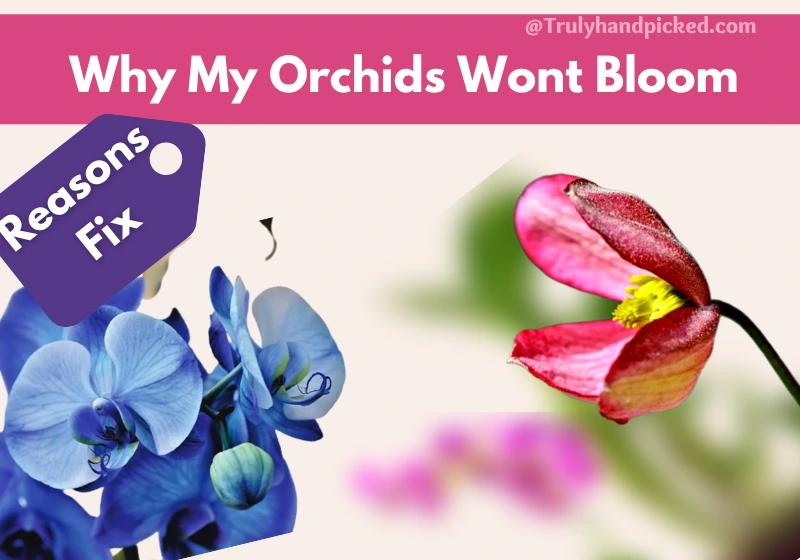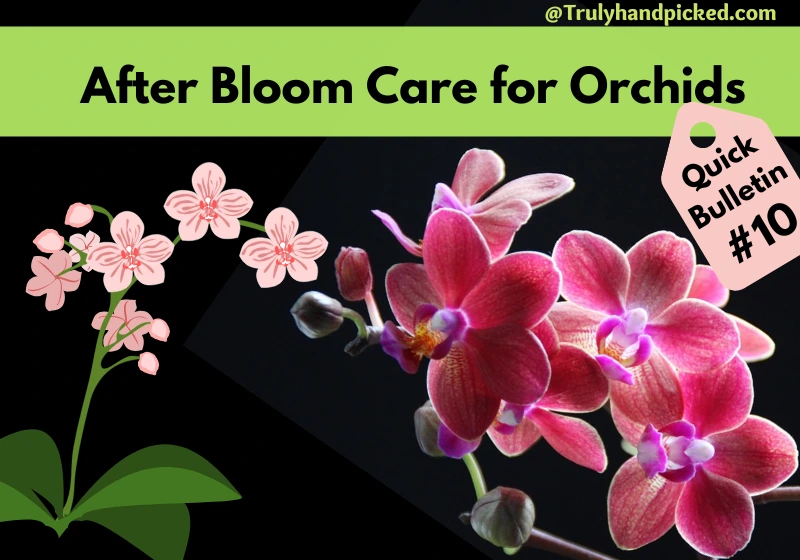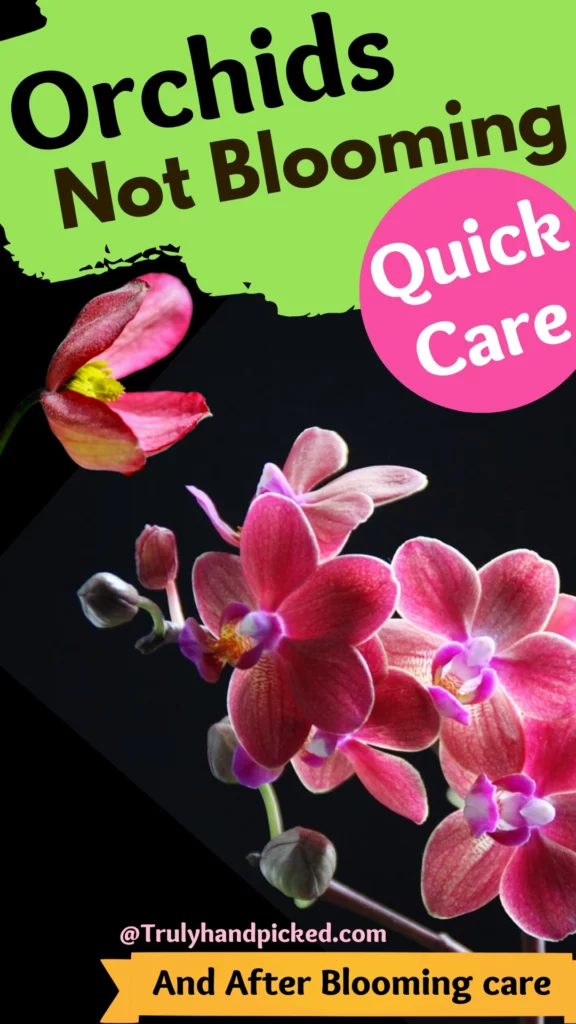The orchid is a flowering plant from a widespread family that produces lovely flowers with a pleasant fragrance. The exact color and scent of the orchid blossoms depend on their specific species.
Most orchid species are hardy and can grow easily in a normal house climate. Boat orchid, vanda, dancing lady, cattleya orchid, dendrobium, Encyclia, ludusia, etc. are some famous orchid verities, which cultivate easily as houseplants.
Orchids may face a common issue in their growing session: the improper or delayed blooming period. However, this phrase is evadable with a few smart tips.
If you can try them during the preliminary growing period, you can stimulate the blooming naturally. So, quickly note down these pretty easy hacks and get a handful of fresh orchid flowers sooner than ever-
How to Make Orchid Bloom?
To boot the blooming capacity in your orchid plant, try to be attentive to the basic needs of the growing plant very intensely. Some basic changes in their daily routine can do the job effortlessly. Let’s find out those tricks through our below discussion-
Give Best Suitable Light:
- Give your plant bright but indirect light
- Make sure you bring your orchid plants out from its dim confines once a day
Never put the plant under direct sun or full sun exposure ever
Maintain A Stable Temperature:
- Maintain a moderately warm temperature for proper blooming
- Make sure the room temperature has at least 10 degrees difference from day to night
- Allow only this much temperature fluctuation before 10-14 days of blooming
Feed Your Orchids (Right Fertilization):
- Orchid plants are moderate feeders and thrive finely with only once a year
- Use any normal water-soluble fertilizer over the organically rich garden or potting soil
- For commercial plant foods, use urea-free low-nitrogen, and high-phosphorus fertilizer in granulated form
Sustain Healthy Roots:
- To keep the roots of your orchid plants healthy, give it a proper pot with the perfect size
- Make sure the growing medium is healthy enough to stay free from any kind of bacterial or fungal infestation
- Repot your plant every 1-2 years to evaluate the root system ideally
Water Accurately:
- Keeping the watering methods accurate is also crucial in this attempt
- Remember that too much water can shed their buds, while too little water can prevent your plant from growing flower buds
- Orchids need regular and subtle rain showers with filtered or distilled water as they basically hail from jungles
Have Patience:
- Give your plant proper care and wait till the right blooming period come
- Different species of orchid have different periods for blooming
- Try to know the exact blooming period of your selected species and induce your plant to bloom at that right period with proper maintenance.
How to Care for Orchid After Booming?
Once your orchid plant starts blooming you need to take some extra care of your plant. This will let those flower buds bloom properly and hold the blossoms for an unusually long period.
This time you can follow a similar kind of caring routine as before. Just make sure they are strict enough to be unbreakable. Especially, to avert any kind of disease contagions or insect infestations.
Here are some useful tips in this regard-
- Keep your plant under bright but direct sunlight. If you are growing orchids indoors, keep them a little away from the window or provide some shade with a curtain from the dappled afternoon sun. For outdoor plants, sow them under the light shade of other trees or hedges
- Makes sure your blooming plant can get 5-6 hours of bright light every day. Let your blooming orchid plant soak bight but indirect sunlight uninterruptedly during the entire morning session, every day.
- Be certain that the room has high humidity and consistent moisture If you can’t provide adequate moisture, try to take help from an artificial humidifier. You can even place a water-pebbles tray around your plant to get similar benefits naturally.
- Keep the air circulation process of the room good with open windows and unpolluted air. Try to use an electronic device to check the freshness of the air, where you put your blooming orchid plant. If the device indicates any kind of air pollution, get rid of it immediately, before it starts hampering your orchid’s buds or blooms.
- Maintain a temperature between 65° to 75° F Never let the temperature drop or get high more than 10 degrees, depending on the night and day conditions.
- Once the stem of your orchid plant seems ready to shed the flower, cut them out with disinfecting shear. Never do anything or use any garden tool that instigates fungal or bacterial infestation on your blooming orchid plant ever.
- Sprinkle some cinnamon powder or melted wax on the cutting to prevent any sort of further infection. You can try some readymade antifungal or antibacterial or insecticides on your plants. But unfortunately, they can harm your new buds or tender flowers due to their heavy chemical effects. So, it is always better to use organic or homemade methods for such purposes.
- Some specific species of orchid need a dormant period to form the shoot, know the requirements of your plant, and provide them accordingly. If your selected orchid species like to be isolated and kept in dormancy, provide them that condition until their buds start blooming.
- Never let the soil dry ever, once the plant starts forming buds and water it consistently. As we mentioned before, orchids mostly belong to rainforests and thus, need lots of water to thrive, especially while blooming. Keep watering our plants once every 2-3 days with 1-inch deep water, as long as they hold flowers on their stems.
- And repot your plant with good orchid mix potting soil as orchids need to be cramped when they start breaking down after blooming. This repotting session also gives the intricate root system of an orchid plant a new boost. It will not only fasten the blooming season in your plant but also encourage your plant to hold those blossoms for an extensive period.
How to Get Your Orchids to Bloom More (Quick Recap)
Sometimes, you may find that after reaching a certain age, your orchid plant couldn’t start blooming. People, who are growing an orchid inside the house, often face this issue at the beginning.
This mostly occurs due to the unavailability of some basic growing essentials. You need to fix those issues expertly to boost the blooming quality in your orchid plant more convincingly-
Things that reduce blooms
- Inadequate sunlight
- Too much heat
- Frequent fluctuation in growing temperature
- Improper fertilization
- Insufficient rooting space
- Over or underwatering
- And unnecessary pruning or replantation
Help your orchid plants to bloom more
- Provide your plant 6-7 hours of bright but indirect sunlight daily
- Try to place the planter in a place where it can get a warm climate with moderate humidity
- Feed your plant once or twice a month with a urea-free high-nitrogen fertilizer
- Try to repot your plant when it overgrows the current planter
- It will give the tricky rooting system enough space to thrive along with making the soil airy
- Don’t repot your plant more frequently or prune unnecessarily, as this will shock your plant
- And try to be a little information about your chosen variety of orchid. This will make you a bit patient about when to look for the blossoms and when not!
FAQ: Orchid Blooming Care
How Long Does It Take For An Orchid to Bloom?
An orchid plant needs almost 3 to 8 years to bloom after the first leaves develop. Once the plant is fully established, it will take 8 to 12 weeks to bloom perfectly.
What Time Of The Year Orchid Bloom?
Most of the orchid species, especially which are popular as houseplants, bloom during fall followed by the frost and springtime. If you want to know the exact month, it is probably early to late March every year.
How Many Times A Year Do Orchids Bloom?
Orchids mostly bloom once a year. However, sometimes, some particular species can bloom twice a year with extra care and stimulation.


